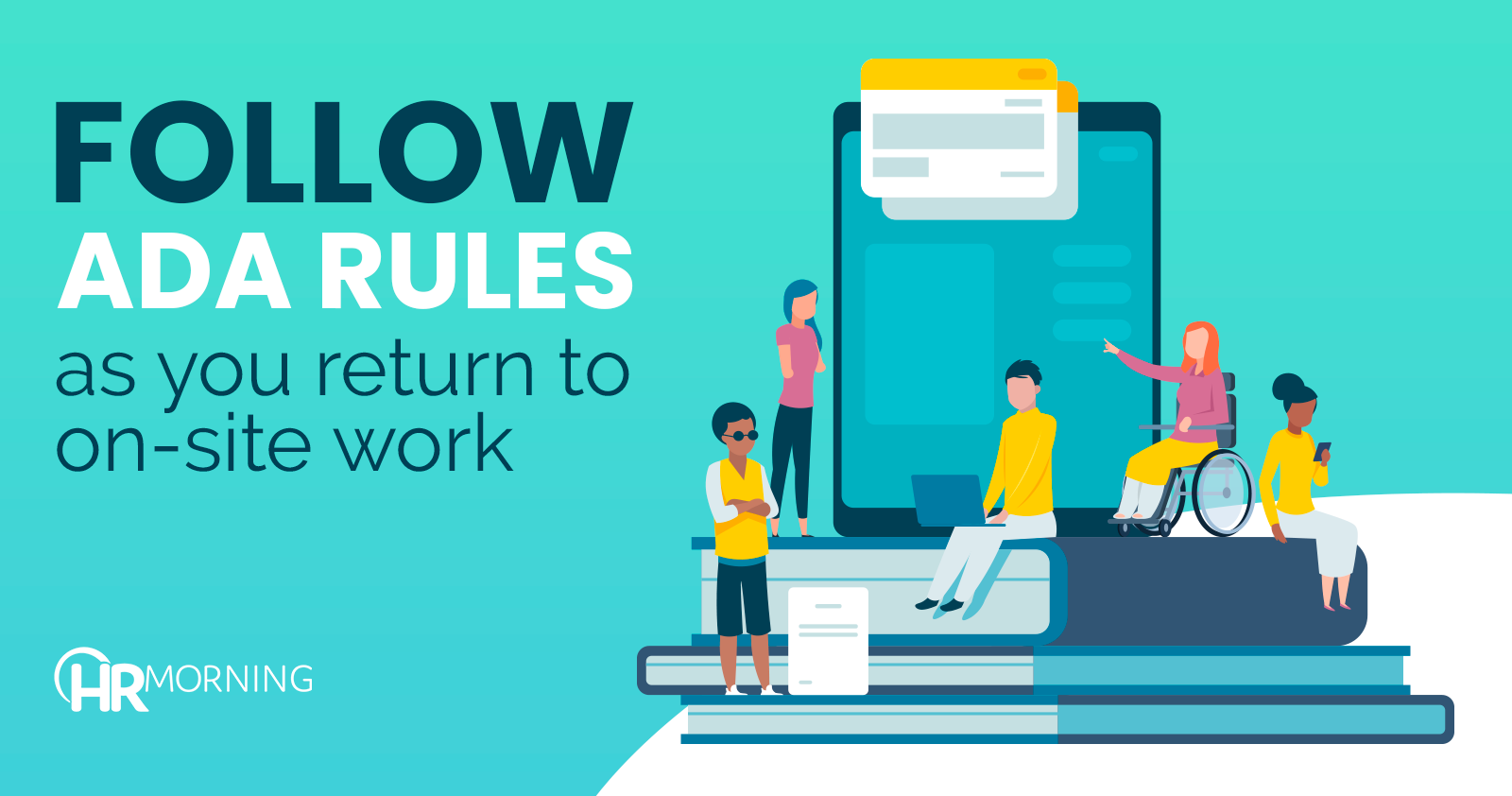The Equal Employment Opportunity Commission has added details to its guidance document, “What You Should Know About COVID-19 and the ADA, the Rehabilitation Act, and Other EEO Laws.”
The commission made additions and changes to the section laying out Return to Work rules.
It addresses questions employers may have about accommodating employees with underlying medical conditions that may make them higher-risk for Covid-19-related illnesses as they return to on-site work.
The EEOC changed earlier guidance to clarify that the ADA does not allow employers to exclude employees from work locations simply because they have an underlying medical condition that the CDC says might pose a higher risk of severe illness if the individual contracts the coronavirus.
But employers can continue workplace screening and can exclude employees who have COVID-19 or symptoms and pose a direct threat of transmitting the disease to other workers.
However, as EEOC Legal Counsel Andrew Maunz explains in the new document, “Employers must do a thorough direct threat analysis, which includes an individualized assessment based on relevant factors and a determination of whether the threat can be reduced or eliminated through a reasonable accommodation.”
Threat analysis
The ADA direct threat requirement is a high standard.
It requires an employer to show that the individual has a disability that poses a “significant risk of substantial harm” to their own health under 29 C.F.R. section 1630.2(r) before they can be excluded from the workplace.
Under the ADA, such action is not allowed unless the employee’s disability poses a “direct threat” to their health that cannot be eliminated or reduced by reasonable accommodation after they return to work.
The guidance indicates that analysis of threat factors should include the severity of the pandemic in a particular area and the employee’s own health (for example, is the employee’s disability well-controlled), and particular job duties.
Analysis should also assess the likelihood that an individual will be exposed to the virus at the worksite.
Measures you may be taking in general to protect all workers, such as disinfection or mandatory social distancing, are also relevant.
COVID-19 Accommodations
As workers return to work during the COVID-19 crisis, employers must consider whether there are reasonable accommodations that would eliminate or reduce risk so that it would be safe for high-risk employees to return to the workplace AND perform essential job functions.
If not, employers must consider accommodations that don’t require the worker to be onsite, such as telework, leave, or a job change/reassignment to a location where it may be safer for the employee to work or can work remotely.
Identifying effective accommodation depends, among other things, on an employee’s job duties and the design of the workspace.
Examples of potential accommodations provided by the EEOC’s new guidance include:
- Additional or enhanced protective gowns, masks, gloves, or other gear beyond what the employer may generally provide
- Additional or enhanced protective measures, for example, erecting a barrier between an employee with a disability and coworkers/the public or increasing the space between an employee with a disability and others.
- Elimination or substitution of particular job duties not considered “essential” functions of a particular position.
- Temporary modification of work schedules to decrease contact with coworkers and/or the public when on duty or commuting).
- Moving the employee (for example, moving a person to the end of a production line rather than in the middle of it if that provides more social distancing).


